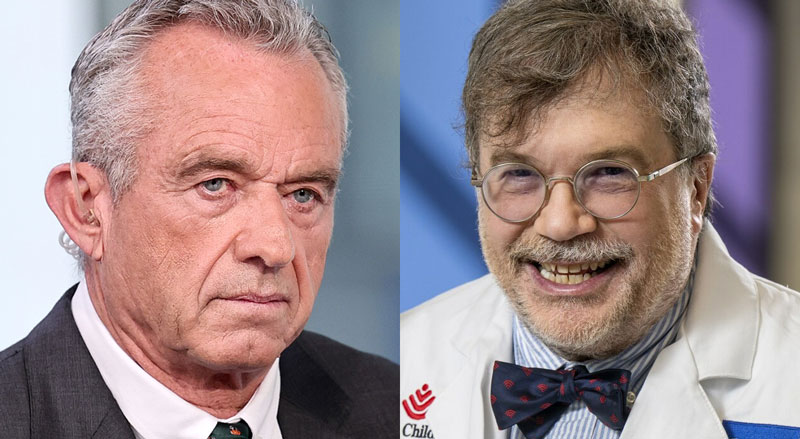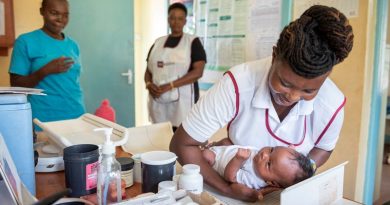What contact sport is doing to our brains
Samantha Hawley: Hi, I’m Sam Hawley, coming to you from Gadigal Land. This is ABC News Daily.
When you’re watching sport on a weekend, whether at a professional amateur or even school level, you’ll always hear the crowd gasp if a player cops a blow to the head. We know it’s not good for the brain, especially a child’s. But do we understand the extent of the damage it can cause? This week, a Senate committee recommended a national strategy to reduce concussions in sports. Today we speak to a former AFL player who has probable CTE, a brain disorder likely caused by repeated knocks, and a neuroscientist about how we could make sport much safer.
Shaun Smith: Hi, I’m Shaun Smith. I played for North Melbourne and Melbourne between 1987 to 1998.
Samantha Hawley: Shaun, take me back to your time as a professional AFL player. You’re on the field for the Melbourne Demons. I can imagine it would have been thrilling to play the game at such a high level.
Shaun Smith: It’s something you can only… Words sort of can’t describe the way you feel in front of tens of thousands of people playing a game that you love. There are a lot of hard yards away from the field, a lot of pain, and a lot of hard work to get there. But yeah, the MCG was 70, 80,000. It’s, it’s something that you just have to experience to… Awesome.
Samantha Hawley: Yeah, I bet it must be incredible. But then I guess Shaun, there were also, I mean you mentioned the hard work, but there are also the injuries and the knocks to the head. How many times would this have happened to you, do you think?
Shaun Smith: Well, the injury was my middle name there for quite a while. Especially at North Melbourne. You know, even had the wonderful experience of rupturing my liver. I got a shirtfront from someone who was part of the game back then and didn’t even get a free kick, believe it or not because it was play-on. But yeah, definitely the concussions have wreaked a lot of havoc with me when I sort of analyze, go back over time talk to people, and watch a bit of video and I reckon I’ve probably been knocked out 14 times. And that’s not even counting the other concussions that you get. And that’s not even on the footy ground. When we trained, we went hard at it.
Samantha Hawley: I mean, unconscious 14 times. It’s a lot of times. What happened after that? What was the treatment?
Shaun Smith: Just rest. There’s been a few that I’ve seen… One against Saint Kilda comes straight to mind, I only know about it because I’ve seen it on video. I Got knocked out and then carted off on a stretcher and then I came back on after halftime. In a final in 87, when I was at North, I’d got whacked pretty hard. I’m not sure whether I got knocked out or not, but I was pretty heavily concussed. I only know this because watched the video. I don’t even remember playing. You come off and then come back on after halftime.
Samantha Hawley: Oh, my gosh.
Shaun Smith: And watching the video, I played like I was concussed (laughs). Yeah, well, that was part of the game back then. It was the old toughen-up type thing. You’re right. You’re right to go.
Samantha Hawley: Unbelievable. So your career comes to an end eventually. But when is it that you start to notice that things aren’t quite right with you?
Shaun Smith: I sort of noticed changes sort of in my 40’s. Just get angry easily. And, depression was, was starting to hit me pretty hard. Points where you’d be in bed for 3 or 4 days, just couldn’t get out and you know, you had some silly thoughts about self-harm. And yeah, it was a tough time. And you know, I had a couple of attempts at ending, ending at all.
Samantha Hawley: Your career ended a while ago and you played a while ago. And things have changed haven’t they since then? Knocks to the head, are taken more seriously, but when you watch the AFL now – or any sport for that matter – and you see players receive a knock to the head, what do you think? Is enough being done now?
Shaun Smith: No, clearly not. I mean, I think the AFL has done a good job cleaning the game up. You know, the cheap hits, the horrible sling tackle headfirst into the ground, and head-high shots. But I think of Jeremy Cameron about three, four. About a month ago.
News grab: Geelong star Jeremy Cameron has thanked fans for their support after being released from hospital following a sickening on-field collision. Cameron and Team-mate Gary Rohan collided in the opening quarter between Geelong and Melbourne, causing play to stop for ten minutes before Cameron was stretchered off the field.
Shaun Smith: I was at the game because my son plays for Melbourne and Jeremy Cameron got knocked out badly he was out for quite a while and then came back, and missed two games, which is nowhere near enough. And in the first 15 minutes of the first quarter, he got a whack in the head. So I’m thinking this is just madness. And then he came back on the ground after that and got another whack. So I’m thinking, I don’t think anyone’s listening.
Samantha Hawley: Thanks so much, Shaun, for that, for telling your story to us. If Shaun’s story has raised any issues for you, you can call Lifeline on 13114. So now to you, Fatima Nasrallah. You’re a neuroscientist. Tell me a bit more about this condition, CTE. There’s a lot we don’t know about it, but we do know that it’s really bad to get repeat concussions, don’t we?
Fatima Nasrallah: Yes. So, sorry to hear about Shaun’s situation. CTE, as we know of as of now, is only diagnosed post-mortem. But, at the moment, we sort of understand a lot more about the symptoms that are associated with chronic traumatic encephalopathy, what we call probable CTE. Which seems to look like early dementia, and Alzheimer’s disease, in terms of symptoms that are similar. But it’s not the same thing.
Now, we don’t know exactly what the causes are for CTE, but a very, very high-risk factor is repeated impacts on the brain over a long period. You can imagine if you had one impact on the brain where the brain is injured and hasn’t had time to recover, and you have smaller contacts or smaller impacts to that specific area in the brain, then these would accumulate over time. And this is what we think is causing chronic traumatic encephalopathy.
Samantha Hawley: Yeah, so that’s what Shaun mentions. He’s knocked out and then he goes back on after halftime.
Fatima Nasrallah: Yeah. So it’s repeated concussions. Now, one thing that I would stress is that it’s not that one concussion where you’re knocked out and it causes CTE. It’s that knockout, and then you’ve got subconcussive impacts to the brain vibrations when you haven’t allowed the brain to fully recover from that impact and reverse or heal itself for that time.
Samantha Hawley: And as you mentioned, we call it probable CTE because it can’t be diagnosed until the person is, is dead. And Fatima it isn’t just professional athletes, is it, that are at risk of this? Your research is currently looking at amateur sports and even school-aged kids playing footy or rugby. It is a serious risk for children, isn’t it?
Fatima Nasrallah: I do think if it’s not managed well, then yes, it is a serious risk. And so this is where our focus is on children, because children, their brain is developing, it’s a very vulnerable stage. You can imagine it as there’s a set trajectory where the brain is developing learning new things, and then you have an impact. And if you have repeated impacts, it probably offsets that trajectory onto a completely different way of development. And so this is where we want to take caution. The children must be taken care of and managed right so that you can prevent these longer-term consequences.
Samantha Hawley: Let’s look, Fatima, at this six-month Senate inquiry that’s just handed down its report this week. It investigated concussion and head injuries at all levels of sport, and it came up with 13 recommendations. How will those recommendations help, do you think?
Fatima Nasrallah: Look, I think it’s a fantastic step forward. I do think that the recommendations are in line with the evidence that was put forward to the Senate.
News grab: Among those recommendations are establishing a national sports injury database, more funding for research, and calls on sporting codes to provide athletes with insurance for head trauma.
Fatima Nasrallah: So we put recommendations for why we needed more research. We put recommendations forth as to why we needed a national database. We put evidence forward for the need for more investigation into children and longer-term studies where we can identify how we can reduce that risk and how we can reduce the burden. And I think all of that has been put forward in the recommendations, which is which is great to see.
Samantha Hawley: Another recommendation was to consider whether the government should enforce return-to-play protocols, because, of course, at the moment sporting codes set their own rules.
Fatima Nasrallah: On a general level, at the moment there’s a 12-day rule. That’s based on medical clearance. It’s based on what we see of symptoms clearing. However, we don’t know and we probably are sure that the brain does not recover at the same timeframe as when the clinical symptoms recover. And this is one of the studies that we are doing at the moment. We’re trying to use the most advanced technology like neuroimaging.
We’re trying to use blood biomarkers and saliva biomarkers. We’re trying to use clinical data to identify when is that critical point where the brain recovers from an injury. And so you need the brain to recover fully before you go back to contact sports. And so you can’t rely that purely on clinical symptoms. So there should be a margin whereby we know that that person’s recovered clinically.
How long more should we wait before we know that it’s safe for them to go back to play and be at higher risk of getting other concussions or other sub-impact injuries? And I think the codes are working with the evidence we have, but it’s very, very vague what the evidence is at the moment. And so erring on the side of caution would probably be a lot better.
Samantha Hawley: All right. The AFL has a 12-day rule, so a player has to sit out for 12 days if they receive a concussion. It’s 11 days for the NRL. But what you’re saying is that might not be long enough…
Fatima Nasrallah: Yes, it takes the brain longer to recover from what we’ve seen. It’s something that we need to investigate to identify when is safest to go back. Yes.
Samantha Hawley: In the meantime, Fatima, for amateur sports players, for parents who are worried about brain injury, is it still safe to play contact sport at that level? What would you say to them?
Fatima Nasrallah: Look, I would say that there has to be awareness from parents. We’ve been working with schools around Queensland for a bit over two years now. We can see that self-awareness is still not there on how serious this condition is. I think we need to embed into our culture that this is very important. So one example, and I just reflected on this the other day, my son had a knee injury while playing soccer and, you know, he trained on the Monday and the Wednesday, and the Tuesday he said, maybe I shouldn’t train tomorrow because my knee might get worse, so I can play the game on the Saturday.
He’ll never say that if he had a head knock. And I think we need to embed into our culture that a head injury is just like a knee injury. You need to let it rest, otherwise, it is going to get worse.
Samantha Hawley: Dr. Fatima Nasrallah is a neuroscientist at the Queensland Brain Institute at the University of Queensland. Shaun Smith is a former professional AFL player who suffers from probable CTE. The AFL is facing several class action lawsuits brought by former players who are suing the league for damages caused by concussion injuries.
This episode was produced by Bridget Fitzgerald, Nell Whitehead, and Anna John, who also did the mix. Our supervising producer is David Coady. Over the weekend, catch This Week with James Glenday, We’ll be looking at whether the Reserve Bank’s interest rate rises have cooled the economy too much. I’m Sam Hawley. ABC News Daily will be back again on Monday.
Thanks for listening.




